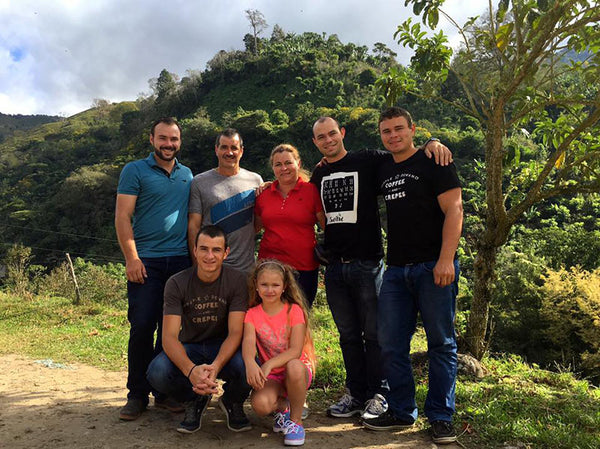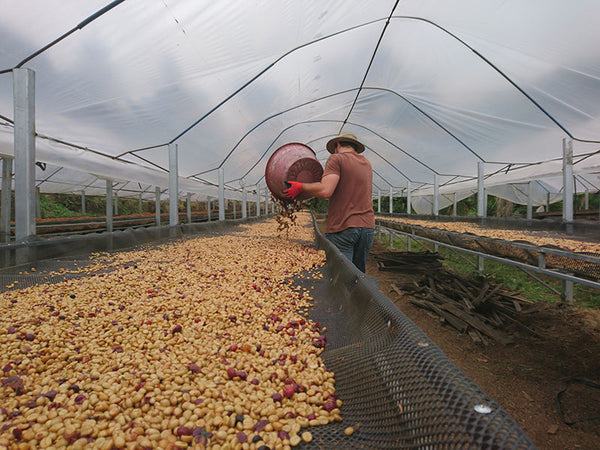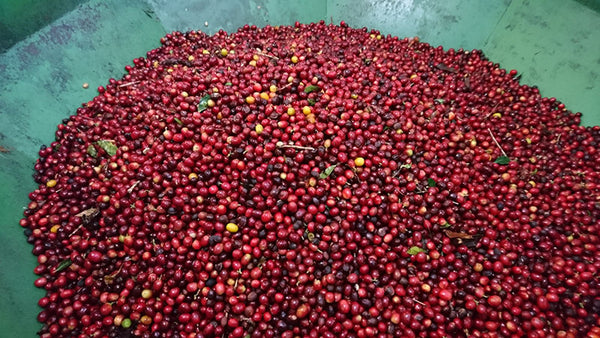An Interview with Ricardo A. Ureña Rojas
Nov 23, 2018
How long has your family been farming for?
Farming has been in my family for many years: my great-grandfather called Hilario Ureña, a migrant from the Central Valley as many of the people who expanded the country to south, founded the village where we live in the middle of the mountains, San Juan Norte, and was the first to introduce coffee to this village.
My grandfather called Régulo Ureña, expend all his live working the land, mainly cattle production and some coffee; in the 90’s, when he decided to retire, he sold his land to his three sons: William, Héctor and Régulo, my father.
My father planted his first coffee plantation when he was single, and 19 years old. Three years later, he married my mother, Isabel, and they settled at the farm. They continued the cattle production in the part of the farm they owned, and continued cultivating coffee.
What made you decide to cultivate coffee?
At the beginning of this century, cattle production wasn’t profitable and my parents broke; produce coffee looked as a more stable activity where they could work and their four sons (Ricardo, Mario, Esteban and Luis Felipe) could grow in. That decision changed the live of all the family, good way.
When did you get involved with the family farm?
Well, I grew up at the farm, running the cows when I was a child, picking blackberries when I was close to finish primary school, and helping at the micromill since the beginning, when I was starting the high school. During all this time, our parents always motivated us to find our own way, even if it was out the farm.

When it was the time to study at a university, I decided to study Business at Technological Institute of Costa Rica (TEC) in Cartago, Central Valley, and spent 6 years there, helping during vacations at the micromill.
In December 2015, I left the leasing company I was working with and return to the farm, to help with the administration, sales and we started to export our coffee by ourselves.
What experiences have shaped your approach to farming?
The time studding at TEC, showed me a big world full of opportunities, people with different like and perspectives, and mainly the need to professionalize the agriculture.
During many years, farming has been looked as an activity for those who couldn’t study or survive in the cities, looking farmers as people to feel sorry,nothing more wrong. Farming is essential for the world and to improve it with knowledge and added value is the right way to make it profitable for farmers and rural regions.
If I remember correctly, your farm is separated into unique lots. What differences do you notice between these lots?
It’s correct, we have separated our farm in different microlots, based on its variety, altitude, land position according to the sun, or something particular we find on the plantation. The cupping profile of each microlot is different, some have less body but higher acidity, some more balanced and sweet, depends on what the land give to us. This separation has permitted us to sell our coffee to more people around the world with different consume preferences, exotic fruity flavors to Asians for example.
How large is your farm?
During last 6 years, caused by many reasons, we have bought the land from our uncles William and Hector and the farm returned to its previous extension, when my grandfather sold it. The farm is 100 hectares approx., and about 15 has. near to water sources and a creek are protected. The production extension is about 36 has., we planted 6 more hectares last year, and right now we are working in nursery with 30.000 plants, so the extension will increase soon.
How many full-time employees do you have?
Well, at the farm we have two different times during the year: crop time and time to prepare the next crop.
During the crop time we hire Panamanian indigenous from the comarca“Ngäbe-Buglé, we provide them housing and all the conditions to live far of their houses during three-four months. It depends on what year of the biannual cycle we are, but we hire about 35 – 50 people during the crop. Once the crop is done, they return to their lands with the money they have saved from the picking.
During the time to prepare the next crop, we hire people from our community, people who also produce their own coffee in smaller farms. When the crop season finish they don’t have other income until next crop, so they work “partial time” with us: some days at their plantations and some days at our farm. By this way, we contribute with an extra income for 20 families approx. during this time.
My father, my brother Esteban and I work full-time at the farm; my brothers Mario and Luis Felipe, my little sister Tatiana, and my mother helps us during their vacations of studies / teaching work.
Is it difficult to get your workers to follow quality standards?
It is. It needs constancy on the training and to be meticulous in supervision. As quality starts from the plantations, during the preparation time we work close with the workers and explain them how important is to take care of the plant and help to have them healthy and producing. They receive a higher economic retribution for their work, compare with other farms around.
During the crop season, we train the pickers since we start to collect the first cherries, even when they are not good enough; one of us supervise the plantation while they are picking and during the measure we control the cherries quality, giving them feedback immediately. We pay them more for their work also compared with other neighbor’s farms, and pay a bonus to those who expend the whole season with us.

How do you get information about market trends?
At this era of connectivity, we get new ideas from other producer / consumer countries by social media and web explore. But, our main source is the information we receive from our clients, as you are closer to the final consume than us and understand easier what the market is demanding.
What varietals do you cultivate?
Our main varieties are Caturra and Red Catuaí, the results on production, cup, and adapt to our land and weather has moved us to cultivate it. However, we also want to see what results could show other varieties, and we have planted Yellow Catuaí, Geisha, Villalobos, Hybrid H17 (catuaí + Ethiopian variety), and there are in our nursery some Catiguá MG2 growing.
Do you have a favorite varietal?
Geisha could be an obvious answer, because the fame it has and the exotic cup it shows; but my favorite variety is the Yellow Catuaí, it produce very well, cherries have high mucilage amount and sugars, so processing it as black honey makes the cup so sweet, fruity with complex acidity.

Are there any difficulties the coffee industry has presented to you?
Well, during these 12 years processing coffee by ourselves, we have passed many difficulties to be here and each one has showed us something to make better. From the beginning, year by year we have invested the earnings in new processes (dry-mill, sell and export by ourselves), new equipment and facilities (pulping machine, sun-driers, dry-mill machinery, bigger warehouse, a truck) to add value to our coffee and get out of conventional prices / standards.
Leaf rust is a difficulty that almost every coffee producer has now, the weather is changing and it gets unpredictable. Nevertheless, having well fed plants and applying a few products to prevent leaf rust, are both ways to combat this fungus that is here to stay.
What improvements do you hope to make in the future?
On the plantation side, we created this year our own nursery to replicate the varieties we see excellent results in our farm. Also, right now we are talking with a botanic institute to get seeds from their collection to explore on new/exotic varieties; there are five –six years before we can see results!
At the drying process, we would like to control better the factors that influence the beans during this process: light, temperature, wind, environmental moisture level, but it is not easy or cheap.
At the storage we would separate the production in smaller microlots and see how could change the profiles from one picking to the other, or factors like the weather during the drying process.
And on quality control, we would like to improve our cupping room with better equipment and facilities.
Let’s see what we can do the coming years!



